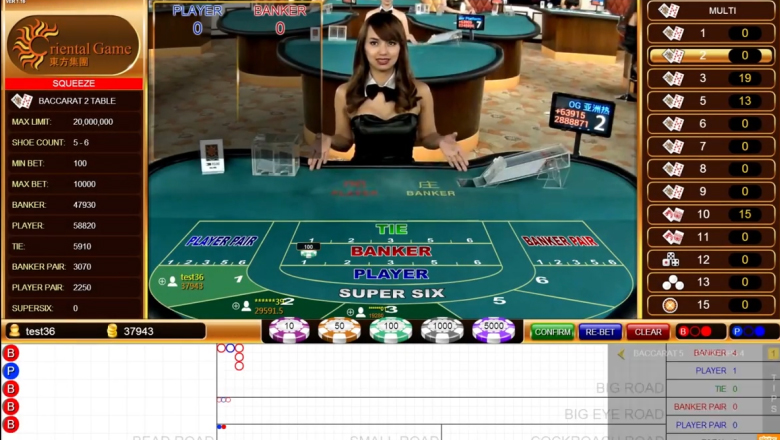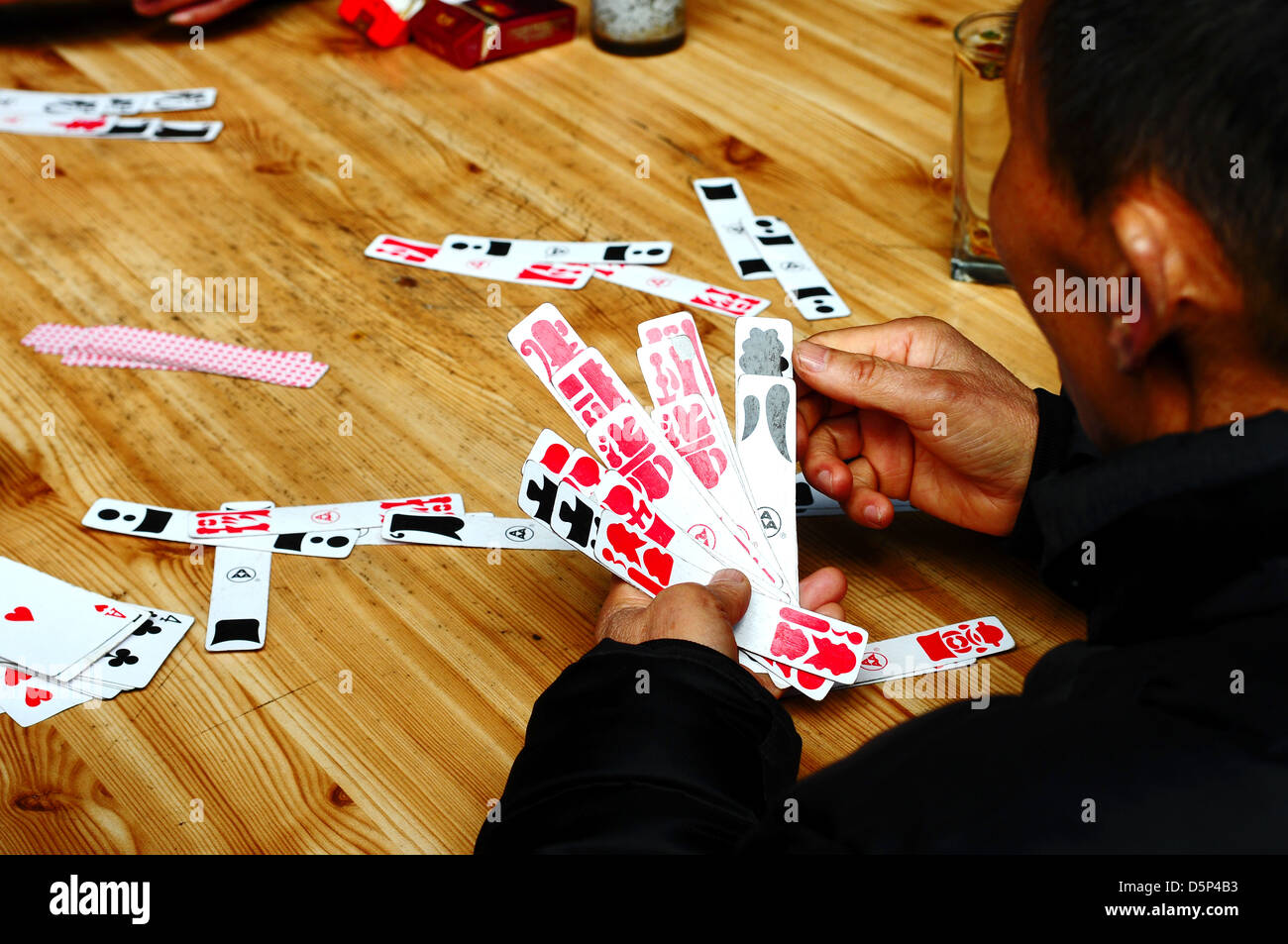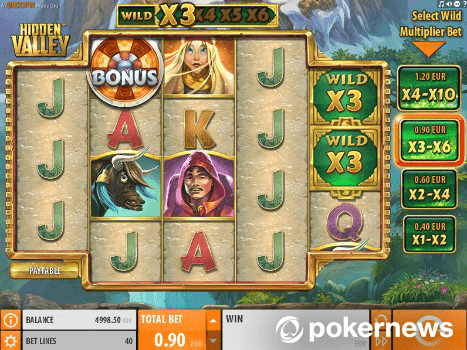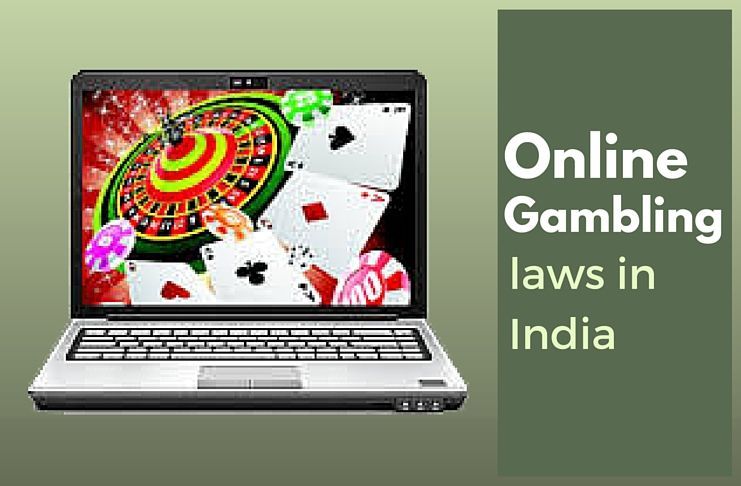Chinese Gambling Game
Casino.guru is an independent source of information about online casinos and online casino games, not controlled by any gambling operator. All our reviews and guides are created honestly, according to the best knowledge and judgement of the members of our independent expert team; however, they are intended for informative purposes only. Pai Gow is a traditional gambling game in China and is probably the oldest game ever played in a casino. It’s important to note that the original Pai Gow is different from the newer Pai Gow Poker (double-hand poker), which is only loosely based on Pai Gow. Dice games, head and tails, and other games based on ‘luck’ have always been played by different groups. Special places even existed where people passionate about gambling would go to play. However, like the casinos of today, those places carried a bad reputation and it was considered shameful for someone to go there. The game is one of the most popular Asian slot Machine with RTP of 95,48%. It is delivered with a very fascinating bonus function (the function of a bonus in Geisha’s garden) where you can receive from 4 to 20 free rotations and then the multiplier increasing your prize from 2x.
Pai Gow Chinese Domino Rules
How To Play Pai Gow Dominoes
Pai Gow is a Chinese Gambling game played with the Chinese dominoes tile set.The game is played in underground casinos in most Chinese communities. It is playedopenly in major casinos in Macau, China, Las Vegas, Nevada, Atlantic City, New Jersey, in many California cardrooms, and in some Australian casinos. It is an ancient game, thousands of years old, and steeped in tradition.
The name 'Pai Gow' is sometimes used to refer to a card game called Pai Gow Poker (or Double Hand Poker ), also popular in Nevada and California, and which is loosely based on the Chinese game.
The Set-Up

Tiles are randomized on the table, and are stacked into eight stacks of four tiles each. This assembly is known as thewoodpile. Various ritualistic 'shuffles' are made, rearranging the tiles in the woodpile in standard ways that result in anew woodpile. Bets are then made.
Next, each player (including the dealer) is given four tiles with which to make two hands of two tiles each. The hand with thelower value is called the front hand, and the hand with the higher value is called the rear hand. If a player'sfront hand beats the dealer's front hand, and the player's rear hand beats the dealer's rear hand, then that player wins the bet.If a player's front and rear hands both lose to the dealer's respective hands, the player loses the bet. If one hand wins and theother loses, the player is said to push, and gets back only the money he or she bet. Generally seven players will play,and each player's hands are compared only against the dealer's hands.
Basic ScoringThe name 'Pai Gow' is loosely translated as 'Make Nine' or 'Card Nine'. This reflects the fact that, with a few high-scoringexceptions, the best a hand can score is nine. To find the value of a hand, simply add the total number of pips on the two tiles,and drop the tens place. So for instance, a 1-3 tile (a tilewith one pip on one end and three pips on the other, for a total of four pips) used with a 2-3 tile (with five total pips) willscore nine, since four plus five is nine. A 2-3 tile with a 5-6 tile will score six, and not sixteen, because you drop the 1. Anda 5-5 tile with a 4-6 tile will score zero, since ten plus ten is twenty, and twenty reduces to zero when you drop the tensplace.
Gongs and WongsThere are special ways in which a hand can score more than nine points. The double-one tiles and double-six tiles are known asthe Day and Teen tiles, respectively. If a Day or Teen tile is used with an eight, the pair is worth ten instead ofthe usual zero. (This is called a Gong.) If a Day or Teen tile is used with a nine, the hand is worth eleven instead ofone. (This is called a Wong.) But a Day or Teen tile used with a ten is only worth two, not twelve; this is because onlyeights and nines can be combined with Days or Teens for higher values. (In other words, when Day or Teen tiles are combined withtiles other than an eight or nine, follow the normal scoring rules.)
The Gee June tilesThe 1-2 and the 2-4 tiles are called Gee June tiles (or sometimes called wildcards). Either tile can count as 3 or 6, whichever scores more. So a 1-2 tile can be used with a 5-6 tile to make a hand worth seven points, rather than four.
PairsThe 32 tiles in a Chinese Dominoes set can be arranged into 16 pairs, as shown in the picture at the top of this article.Eleven of these pairs have identical tiles, and five of these pairs are made up of two tiles that score the same, but lookdifferent. (The latter group includes the Gee June tiles, which can score the same, whether as three or six.) If a hand is madeup of a pair, it always scores higher than a non-pair, no matter what the value of the pips are. (Pairs are often thought of asbeing worth 14 points each.)
When two pairs are compared, the higher-valued pair wins. This is not determined by the sum of their pips, but by aesthetics.It must be memorized which pairs score more than other pairs. The highest pairs are the Gee June tiles, the Teens, the Days, andthe red eights. The lowest scoring pairs are the mismatched nines, eights, sevens, and fives. But even the lowest-scoring pairwill beat any non-pair.
TiesWhen one of a player's hands is compared to one of the dealer's hands, it sometimes happens that both will have the samescore. For instance, a player may have a front hand worth one point, consisting of a 3-4 tile and a 2-2 tile, and the dealer mayhave a front hand also worth one point, made up of a 5-6 tile and a 5-5 tile. In these cases, determine which tile in each handhas a higher value, as determined by the pair rankings mentioned above. In this case, the 2-2 tile is in a higher-ranking pairthan the 3-4 tile, and the 5-5 tile is in a higher-ranking pair than the 5-6 tile. (Again, the rankings of the pairs follows noobvious pattern and must be memorized.) Since the 5-5 pair outranks the 2-2 pair, the dealer would win this front hand. In theunusual case of a true tie, where the dealer's high tile would be in the same pair as the player's high tile, the dealer wins thetie.
There are two exceptions to the method described above. First, although the Gee June tiles form the highest-ranking pair, theyare considered to have no value when evaluating ties. Second, any zero-zero tie is won by the dealer, regardless of the tiles inthe hand.
StrategyThe basic decision to be made in Pai Gow is how to arrange one's hands. Given any four tiles, there are always three ways toarrange them into two hands (although some arrangements may be functionally identical to others). Sometimes one way will beclearly superior to another, but at other times it is difficult to determine the best strategy.
For instance, consider the four tiles at right. It would clearly be unwise to combine tile A with tile B, since each handwould be worth zero. It would make more sense to combine tile A with tile C, in which case both hands would be worth 5. Or youcould pair tile A with tile D, in which case your front hand would be worth 3 and your rear hand would be worth 7. Which is abetter choice?
If you think the dealer will have poor hands, such as a front of 1 and a rear of 6, you would want to pair tile A with tile Din order to maximize your chance of winning. If you are afraid the dealer may have a better hand, such as a front of 4 and a rearof 9, then you will want to pair tile A with tile C in order to maximize your chance of pushing. You might also consider thatpairing tile A with tile D will make it more likely that a tie would break in your favor.
Experience will help a player get a feel for which hand combinations will work well in which situations. Many players usevarious superstitions as well, believing that one should (for instance) never pair a 6-4 tile with a nine.
Article text based on the Wikipedia, licensed under the GFDL.
Other Sources of Pai Gow Chinese Domino Rules
Pai Gow Chinese Domino Games
- Pocket Pai Gow Championship for PocketPC - by Crosstec Limited
This page is based partly on information from Ka Lun, Anthony Horsley Sr, Don Smolen, Richard Dewhirst, Alan Ho, Brandon Bahti and several anonymous correspondents.
Introduction
This Chinese gambling game is popular in Hong Kong and parts of Southeast Asia and is also played to some extent in the USA. It is known by several different names.

- In Cantonese it is called Sap Sam Cheung (十三張), which means 13 cards, and in Vietnamese it is known by the similar name Xập Xám Chướng.
- In Chinese, it is also sometimes called Luosong Pai Jiu (羅宋牌九), which I think means Russian Pai Gow. The game is indeed distantly related to Pai Gow.
- In the USA it is often known as Chinese Poker or sometimes Russian Poker, but note that some people also use the name Chinese Poker to refer to the climbing game Big Two. In Hawaii it is called Pepito.
- In the Phillipines it is known as Pusoy, again not to be confused with Pusoy Dos, which is Big Two. Another name sometimes used is Good, Better, Best, referring to the three hands of a player.
The aim is to arrange your 13 cards into three poker hands - two of five cards and one of three cards - which will beat the corresponding poker hands made by the other players.
A recent development is Open Face Chinese Poker, in which after the first five cards, hands are built face up one card at a time.
Players, Cards, Stakes and Deal
There are four players, each playing for themselves. A standard 52 card pack is used.
Before playing it is necessary to agree on a stake. Below I will describe the payments in terms of units; one unit can be worth whatever the players agree in advance - $1, $10, $100, etc.
The cards are shuffled, cut and dealt out singly: 13 cards to each player.
Arrangement of cards

Each player must divide their 13 cards into a 'back' hand of 5 cards, a 'middle' hand of 5 cards and a 'front' hand of 3 cards. Considered as poker hands, the back hand must be better than the middle hand, and the middle hand must be better than the front hand. The standard poker ranking is used - so the hand types from high to low are: royal flush, straight flush, four of a kind, full house, flush, straight, three of a kind, two pairs, one pair, high card (see the page on ranking of poker hands). There are no wild cards.
Since the front hand has only 3 cards, only three hand types are possible: three of a kind; one pair; high card. There is no value in having a front hand with three consecutive cards or three cards of the same suit: 'straights' or 'flushes' in the front hand do not count.
Players place their three hands face down in front of them, the front hand nearest the centre of the table and the back hand nearest themselves.
Showdown and Scoring
When everyone is ready, all the players expose their three hands and each pair of players compares the corresponding hands. In the simplest system of payments, you win one unit for each corresponding hand of another player that you beat and lose one for unit each hand that beats you. When the hands are equal you neither win nor lose. Here is an example:
The result would be as follows:
| Players | front winner | middle winner | back winner | North | East | South | West |
|---|---|---|---|---|---|---|---|
| North v East | North | North | North | +3 | -3 | ||
| North v South | South | South | North | -1 | +1 | ||
| North v West | North | North | West | +1 | -1 | ||
| East v South | South | South | East | -1 | +1 | ||
| East v West | East | West | West | -1 | +1 | ||
| South v West | South | South | West | +1 | -1 | ||
| Total | +3 | -5 | +3 | -1 |
Notice that although West's back hand is the overall best hand (aces full), West loses on balance because of the weaker middle and front hands. East could have done slightly less badly by putting the sevens in the middle hand, which would then have beaten West. Notice also that it is not legal for East to put the jacks in the front hand, because it would then not be possible to make a middle hand that was better and a back hand that was better still from the remaining ten cards.
Special Hands
It is possible to play using just the payments described above. However, many players add two further features to the stakes: increased payments for certain hands, and some special 13-card hands that win automatically. If you are playing with these it is important to agree in advance exactly which ones are allowed and how much each is worth.
A typical scale of increased payments is as follows:
- If you win the front hand with three of a kind, you receive 3 units instead of 1 for that hand.
- If you win the middle hand with a full house, you receive 2 units instead of 1 for that hand.
- If you win the back (or middle) hand with 4 of a kind, you receive 4 units instead of 1.
- If you win the back (or middle) hand with a royal flush or straight flush you win 5 units instead of 1.
These bonuses only count for you for hands that you win. For example if A and B each have a 3 of a kind in front, but B's is higher, A will pay B 3 units for it. A's 3 of a kind will still count against the other players if it wins.
Example:A has 6-6-6, 4-4-4-9-9, K-K-K-8-8 and B has Q-Q-7, J-J-J-2-2, 5-5-5-5-A. A wins 3 for the front hand, but B wins 2 for the middle and 4 for the back, so altogether A pays 3 units to B.
When special hands are allowed, the following 13-card hands win automatically against any ordinary hand, if declared before the hands are exposed. When two special hands come up against each other, the higher wins the full specified amount and the lower loses its value (though it can still win against the other players). After the special hands have been dealt with, the remaining players expose their cards and settle up among themselves in the normal way. A typical schedule of special hands, in ascending order, is:
- Six pairs: a hand with six pairs and one odd card. When two players have six pair hands, compare the highest pair; if the highest pairs are equal compare the second highest pair, and so on. Win 3 units.
- Three straights: the back and middle hands are five card straights and the front hand is a three card straight (i.e. three cards of consecutive rank). If two players have three straights, compare the highest (back) straights first, then if these are equal the middle straights, and finally, if all else is equal, the front straight. Win 3 units.
- Three flushes: the back and middle hands are flushes, and the front hand is a three-card flush (three cards of one suit). If two players have this, the player with the better back hand wins; if tied the better middle hand; if those are also tied, the better front hand. Win 3 units.
- Complete straight: the hand has one card of each rank: A-2-3-4-5-6-7-8-9-10-J-Q-K. Suits can be mixed. If two players have this, they are tied. Win 13 units.
A player who has a special hand can choose not to declare it, but instead to set three hands of 5, 5 and 3 cards in the normal way. This loses the right to an automatic win, but it may occasionally be possible to win more units in the normal settlement, when extra payments can be won.
Variations
There seem to be numerous variations in the way the payments are organised. Here are the ones I have so far discovered.
Types Of Gambling Games
- Three of a kind in the front hand: 2 extra units
- Full house in the middle hand: 1 extra unit
- Four of a kind in the back or middle hand: 3 extra units
- Straight or royal flush in the back or middle hand: 4 extra units
This variation is often combined with the overall point variation above.
- Three of a kind in the front hand: 2 extra units
- Full house in the middle hand: 2 extra units
- Four of a kind in the back hand: 4 extra units
- Four of a kind in the middle hand: 6 extra units
- Straight or royal flush in the back hand: 6 extra units
- Straight or royal flush in the middle hand: 8 extra units
The special hands, in ascending order, are:
- Three flushes: 3 units
- Three straights: 4 units
- Six and a half pairs: 4 units
- Five pairs and one three of a kind: 5 units
- Four threes of a kind and an odd card: 6 units
- All cards are the same colour: 10 points
- Small: all cards are 2, 3, 4, 5, 6, 7, 8: 10 points
- Big: all cards are 8, 9, 10, J, Q, K, A: 10 points
- Three fours of a kind and one odd card: 16 units
- Three straight flushes: 18 units
- All 12 picture cards plus any 13th card: 18 units
- All thirteen cards of one suit: 26 units
A special hand, if declared before the cards are exposed, beats any normal hand and wins the number of units specified in the table (a player wins from the bank, or the bank wins from all players). If the bank and a player both have special hands, the holder of the higher scoring hand wins the difference between their values.
- Three of a kind in front: 3 units instead of 1
- Full house in the middle: 2 units instead of 1
- Four of a kind at the back: 4 units; in the middle: 8 units
- Straight flush at the back: 5 units; in the middle: 10 units
- Three straights: 3 units
- Three flushes: 3 units
- Six pairs: 3 units
- Five pairs and one triplet: 6 units
- Complete straight A to K with mixed suits: 13 units; if all 13 cards are of one suit: 26 units.
- Three of a kind in front: 3 units instead of 1
- Full house in the middle: 2 units instead of 1
- Four of a kind at the back: 4 units; in the middle: 8 units
- Straight flush at the back 7 units; in the middle: 14 units

- Three straights: 4 units
- Three flushes: 4 units
- 12 red cards and 1 black or 12 black and 1 red: 4 units
- All black or all red: 6 units
- Six pairs: 4 units
- Complete straight A to K with mixed suits: 13 units
- All 13 cards of one suit: 39 units
A player wins two out of three hands against an opponent receives 1 unit from that opponent. For winning all three hands the payment is 6 units. A player who wins all three hands against every other player is paid 9 units (instead of 6) by each. For winning with particular hands in particular positions there are additional payments as follows:
- Straight flush: 5 units at the back; 10 units in the middle
- Four of a kind: 4 units at the back; 8 units in the middle
- Full house: 2 units in the middle
- Three of a kind: 3 units at the front
A player who surrenders pays 3 units to each opponent.
Some play with an extra side bet on the number of aces held. One aces is worth 1, two aces 2, three aces 6, four aces 8. Between two players, the player with fewer aces pays the difference in units, in addition to the payments for the Chinese Poker game.
Payments are made in chips and it is not possible to win or lose more chips than you had in front of you at the start of the deal. Settlement is in clockwise order staring with the dealer. Any 13-card special hands are settled first, followed by all other payments. Specifically, if the players in clockwise order are A (dealer), B, C, D then settlements are made in the order A vs B, A vs C, A vs D, B vs C, B vs D, C vs D. Example: A starts with only 8 chips. A wins all three hands against B and loses all three against C. B pays A 6 chips, but A pays only 2 chips to C, because each chip is either doubled or lost, and A's first 6 chips have already been 'used' to justify the win from B. Therefore A ends up with 8+6-2=12 chips. A neither pays to nor receives from D since the transactions with B and C have already accounted for all A's chips. Players can buy additional chips from the house after the settlement and before the next deal.
Chinese Gambling Game Crossword
The casino takes a fixed rake per hand, and part of this is used to build jackpots that are offered for certain unusual events - for example when a player has a straight flush, three of a kind, and a pair and loses all three hands to another player.
Other Chinese Poker web pages

Further information can be found on Don Smolen's Chinese Poker page. From there you can also order his excellent book on the tactics of this game, and obtain his CPOKER computer program.
Rules for a version of Chinese Poker can also be found under the name Pusoy on this archive copy the Bicycle Cards web site.
Rules for Chinese Poker can also be found at the Asian Games Site vinagames.com, where it is possible to play Chinese Poker on line.
Playing Chinese Poker Online
With Phong Le's Chinese Poker Analyser you can compare the power of alternative divisions of 13 cards into three hands, and play Chinese Poker (Xap Xam) against one, two or three computer players.